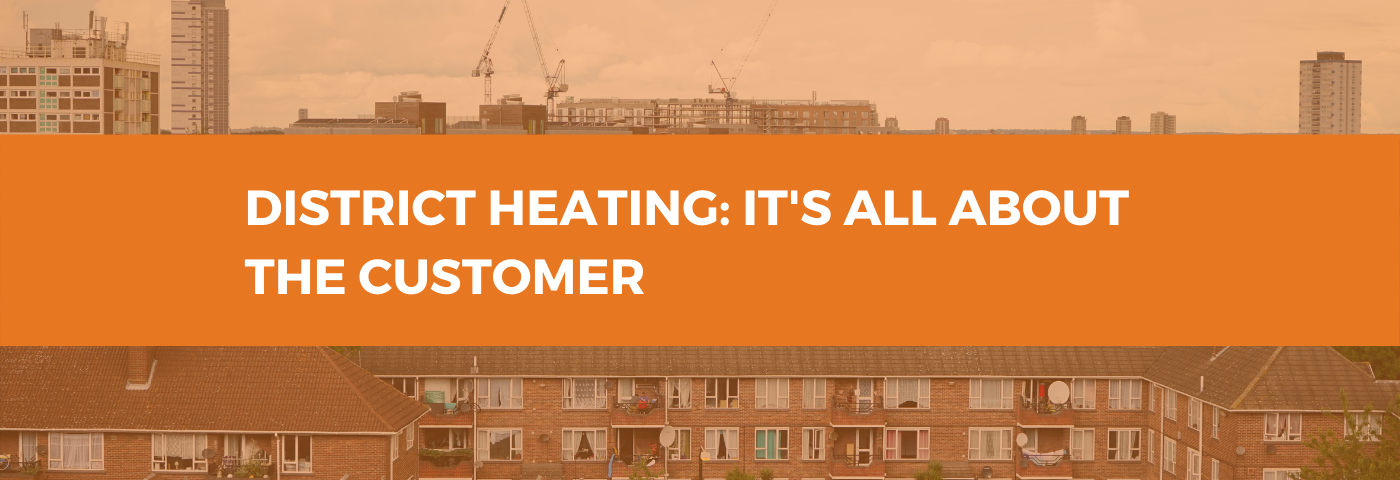The technical focus of older heat network design is no longer fit for purpose. Today, it’s all about putting the customer at the centre of planning, says Ian Allan, Head of Research and Development for Switch2 Energy.

Discover the UX
Heat networks are complex engineering infrastructure projects, but today’s developers and engineering teams must put the user experience (or UX) at the centre of planning. It’s the heat network customers who will fund and rely on their district heating scheme long into the future.
All major stakeholders, such as customers and community members, must get involved in the development process to make sure that the proposed system satisfies user needs, whilst also working financially and technically.
Holistic approach
Holistic planning is important to the efficient long-term operation and financial viability of heat networks. This means designing-in minimal operating costs and maintenance, high levels of resident satisfaction, smooth payment procedures and flexibility.
Voluntary codes of practice for designers and developers from CIBSE and the Association for Decentralised Energy (ADE), and The Heat Trust, are crucial to this process. Switch2 Energy and other leading community and district heating specialists have helped to develop this guidance, so there is a wealth of experience, best practice and expert advice to draw upon. All developers, plus their designers and subcontractors, should consult these documents.
It is imperative that the CIBSE/ADE Code of Practice and Heat Trust guidelines are included as a key requirement in briefs and specifications relating to feasibility studies, design services, construction contracts, commissioning contracts, operation and maintenance contracts and energy services contracts.
Billing, metering and pricing
Metering and billing must be an integral part of the design and planning process. Treating metering and billing as an afterthought is a common mistake of poorly performing schemes of old. Getting metering and billing right is even more important since the introduction of The Heat Network (Metering and Billing) Regulations.
Fairness and transparency in pricing is crucial and this is reinforced by The Heat Trust, which includes an obligation to provide residents with information showing how pricing compares to typical conventional heating supplies. Owners must be sure cost forecasting is robust and that their charges will survive such scrutiny.
The residents’ needs must be fully considered, but this must be balanced by ensuring that the scheme pays for itself. Cash flow is critical, which is why modern prepayment/pay-as-you-go smart metering technologies should be considered. In most cases, such equipment cannot be fitted retrospectively to tackle rent arrears – they need to be installed at the start.
Operational responsibilities
There are many elements to a district heating scheme, which is why it is so important to assign clear responsibilities for development, operation and maintenance of the project. This will help smooth the development process and make sure that the resident’s needs are not overlooked.
Higher standards
District heating still has a legacy of poorly designed and maintained projects, but the sector is rapidly maturing and transforming. There are now many examples of good practice, but to improve standards further, a well planned, long term, customer-focused view must be taken. With careful planning, heat networks can achieve the necessary return on investment and contribute to urban emissions reduction targets, while ensuring affordable, low carbon, reliable heat for residents.
Principles of effective planning
- Use the CIBSE/ADE Code of Practice, and Heat Trust Guide.
- Consult extensively, especially with the eventual scheme operator and residents.
- Get everyone onboard with best practice and scheme strategy, and assign responsibilities carefully.
- Decide what customer satisfaction looks like and how you can deliver this.
- Review future operational efficiency, including factors such as low heat loss, flow rates and return temperatures.
- Consider requirements of Heat Network Metering Regulations early on.
- Consider installing pre-payment meters to ensure debt does not build up.
- Design with maintenance costs in mind.
- Design flexibility into the system for future expansion and installation of more efficient/ low carbon elements, such as fuel cells.
Download the free Switch2 guide: Joined Up Thinking – ways to put residents at the centre of your community heating scheme or visit www.switch2.co.uk for further information.

